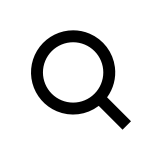Hugo Roelandt — INSTALLATIONS
In the ‘90s, then a teacher at the Royal Academy himself, Hugo Roelandt took a postgraduate course at the HISK (Higher Institute for Fine Arts), which was located in Antwerp at the time. His graduation presentation featured an installation of stacked monitors exploring red, green, and blue as the primary components of modern digital colour display systems. The work reflects Roelandt’s lifelong fascination with light and colour, rooted in his expertise in colourimetry, one of the subjects he taught at the academy. In the ‘90s, Roelandt primarily experimented with video art, embracing emerging digital technologies.
The projects Colourframe, Nuances of White and Variations of White are studies of light and colour, immaterial works based solely on the manipulation of light and space. There is no use for what are usually considered artistically suitable materials, but for new techniques that deal with negative space, the surroundings, the environment. The environment of man becomes the subject of the project.
In Colourframe (+ + + = +), an abstracted form of electronic image is suggested, and the residual value of the video images analysed. A mixture of additive and reflected subtractive colours shows what happens in one pixel of a colour monitor. The project consists of three different spheres with, in each of them, a video monitor. Every sphere only exists as a colour space in which the presence of the video monitor functions as complimentary colour. Through ambient lighting, the three spheres represent the primary colours of the colour triangle (red, green, blue). while the monitors in each space always show the complementary colours (cyan, magenta, yellow). What is shown is the additive process of the colour mixture of the light of the space (itself the result of a reflected subtractive colour mixture) and the light of the monitor. In this way shows, the medium ‘video’ reveals its own process – without resulting in any attempt to fill the screen in a figurative way, and without turning video art into a cheap form of narrative film.
The project Colourframe (+ + + = +) was never realised as described above, but formed the basis of a series of projects by Roelandt with space and light. Among such projects were his 1986 exhibition of the empty interior of a shipping container (with a mirror at the end, and the strong orange light illuminating the interior space), and the colour show brightening up the neoclassical façade and garden of the Royal Academy of Fine Art, Antwerp, in 1996 as well as a series of light projects during the 90s.
(Abstracts from Hugo Roelandt: Let's Expand The Sky, red. Marc Holthof, Occasional Papers, Londen, 2016)











